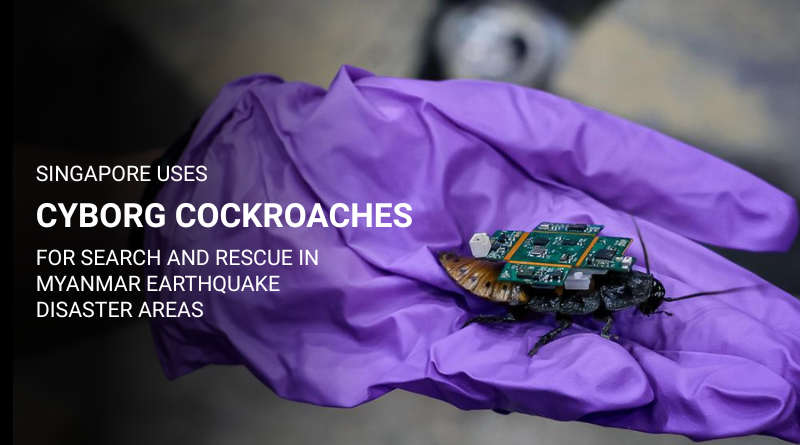Singapore uses cyborg cockroaches for search and rescue in Myanmar earthquake disaster areas
Following the devastating 7.7-magnitude earthquake that struck Myanmar on March 28, Singapore has deployed 10 Cyborg cockroaches to aid in the search and rescue operations in quake-hit areas. These innovative bio-hybrid insects began assisting efforts on March 30, under the coordination of the Singapore Civil Defense Force (SCDF).
This marks the world’s first real-life use of Cyborg insects for human search and rescue operations. After extensive testing, these insect-hybrid robots are now being deployed in the field for practical use.

ST PHOTO: GAVIN FOO
According to reports, these Cyborg cockroaches were developed collaboratively by the Home Team Science and Technology Agency (HTX), Nanyang Technological University (NTU), and Klass Engineering and Solutions. On March 29, the SCDF arrived in Myanmar with an 80-member team and four rescue dogs. The HTX and Klass teams followed the next day with the Cyborg insects.
Although the Cyborg cockroaches didn’t directly locate any survivors, they proved extremely helpful in exploring debris and hard-to-reach areas where human rescuers couldn’t enter easily. They supported rescue teams by providing access and visibility in narrow, unstable zones.
Each Cyborg cockroach measures about 6 centimeters in length and is equipped with a backpack-like setup containing a camera and sensors. Thanks to their small size, they can move freely through rubble and tight spaces. Their movements are remotely controlled using bio-electrodes attached to their antennae and rear, while the data they collect—via camera and sensors—is processed using machine learning algorithms to detect signs of life.

ST PHOTO: GAVIN FOO
These bio-hybrid cockroaches were first introduced at the Milipol Asia-Pacific and TechX Summit in Singapore in April 2024. Initially planned for real-world deployment around 2026, their early use in Myanmar’s earthquake zones highlights their potential. Although still in the research and development phase, their deployment offers a technological boost to search and rescue operations, making emergency response faster and more efficient.






